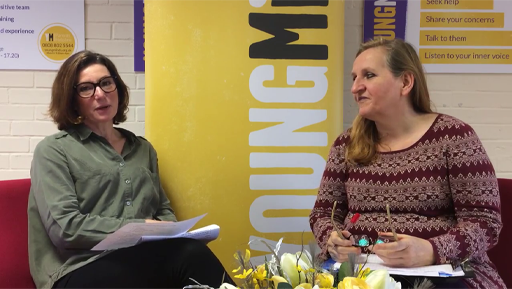2.2 Question types
Another way of encouraging people to talk and showing you are interested as Pooky suggests is by asking ‘open questions’ rather than ‘closed questions’. An open question invites a free choice of answer, whereas a closed question tends to elicit a ‘yes’ or ‘no’ answer. Compare the two questions below:
- Did you play football today at school?
- How did you find school today?
It would be easy to say ‘yes’ or ‘no’ to the first, whereas the second question could open up a range of different answers.
There are also times when a carefully worded observational statement can encourage a young person to confide in you: ‘I’ve noticed you haven’t been catching up with many of your friends, seems like things are difficult at the moment’ (Stem4, n.d., p.1)
Quite often, the challenge is to know what to say next, and how much time you should give if there is a period of silence. Epic Friends, a website that guides young people to support one another, makes the following suggestions for good listening:
- Giving people the space to talk, by not interrupting.
- Don’t immediately dash in with reassurance and solutions.
- Acknowledge what the person is saying, by simply stating what you think you have heard, e.g. ‘it sounds like you don’t know what to do’.
- Notice how you are feeling as you listen, and whether your emotional responses are stopping you from listening properly. (Epic Friends, n.d.)
As a parent or caregiver, it can be easy to feel defensive or guilty when a young person who is close to you shares dark or troubling thoughts. It’s quite normal for parents to feel responsible and to find it difficult to disentangle their desire to ‘solve a problem’ or their fears about being part of the problem, from the process of allowing a young person find their own solution. Bringing your own background anxieties into the conversation can limit your ability to listen openly. Removing your self-defence filters and focusing back to the young person next to you can help them immensely.
It can be easier for therapists than parents to handle a young person’s difficult thoughts and emotions because they are not personally involved in the young person’s life. In Session 8, you’ll learn more about how trained therapists can help. In the next activity you’ll consider how you might approach a difficult conversation and be an ‘anchor’; for your own child or a young person you are working with.
Activity _unit7.2.3 Activity 4: ‘Be a child’s anchor’
Watch Video 4, in which two workers from the YoungMinds Parents Helpline share tips for approaching difficult conversations. Then, work through steps a,b and c below.

Transcript: Video 4: Difficult Conversations - Roundup | YoungMinds Parents Lounge
a. Identify one suggestion from the presenters that helps to put your mind at rest, and make a note of it here:
b. Identify the five ‘top tips’ and summarise them below.
Discussion
Here are five tips mentioned in the video:
- Engage first in a ‘general’ conversation rather than diving in about an issue.
- Be honest that something is difficult and that you also find it difficult.
- Always validate the other person’s feelings, which means accepting that the emotions they are feeling are real to them.
- Reassure them with love, support, hope, offering the message that you are there for them.
- It’s not always about providing solutions instantly.
c. Make a note of one phrase that you will find particularly useful.
Discussion
Here’s an example: ‘I know this is difficult to talk about…’ Read on to discover suggestions for conversation starters.
